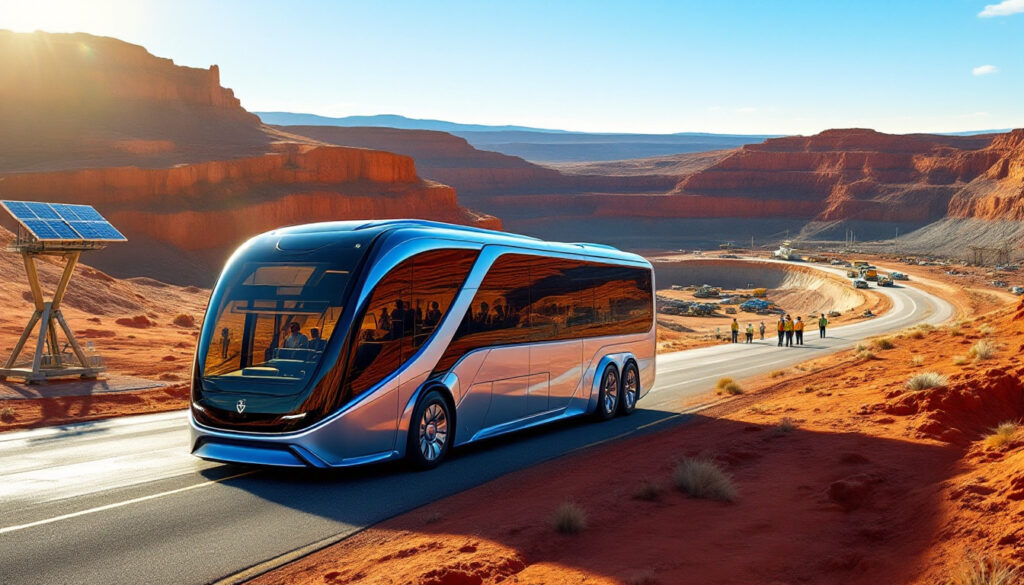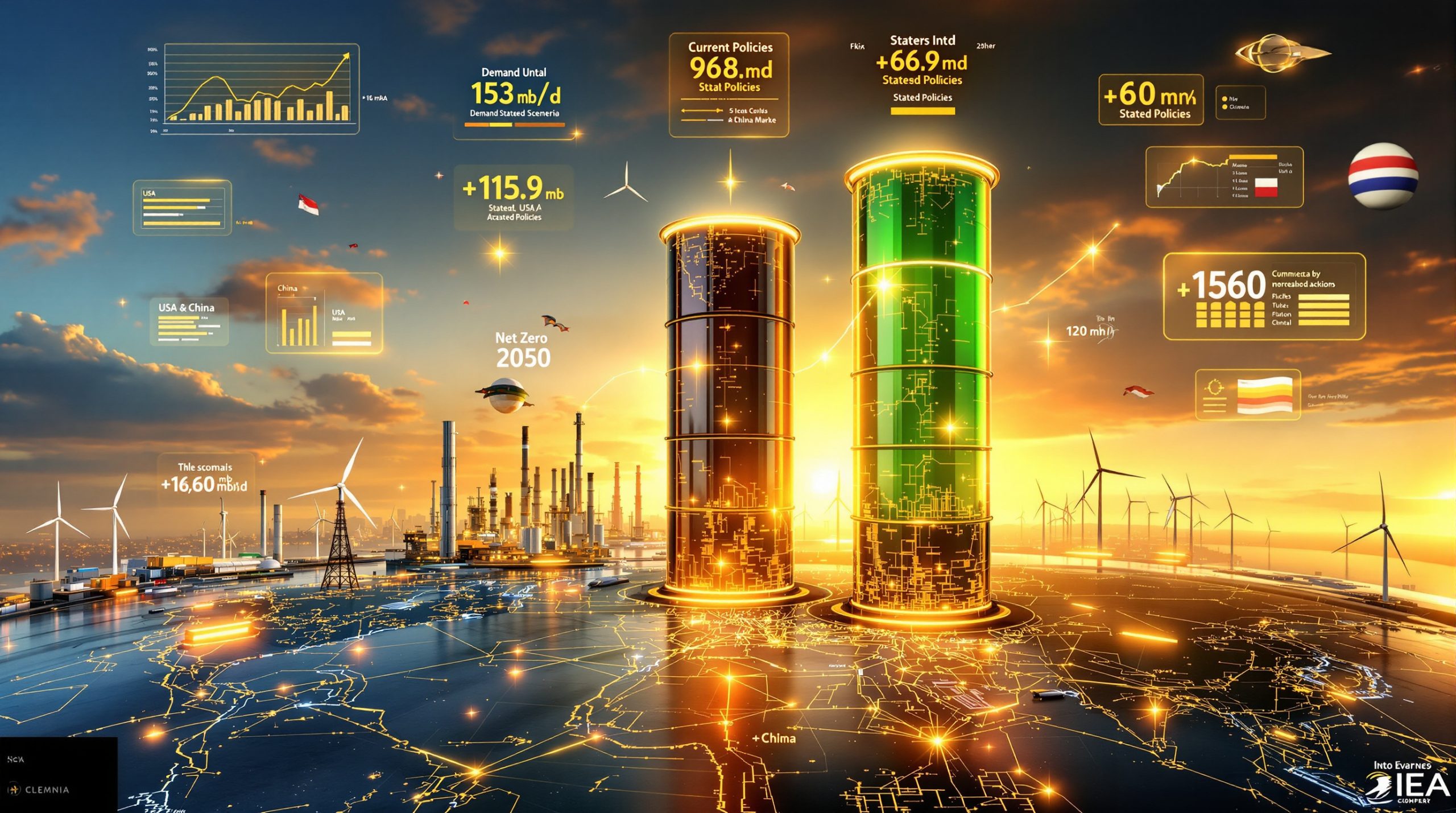How Are Electric Vehicles Transforming Mining Transportation?
Electric fleet transportation is revolutionizing the mining industry by offering sustainable alternatives to traditional diesel-powered vehicles. As mining operators face increasing pressure to reduce emissions and operational costs, electric vehicles (EVs) are emerging as a practical solution for workforce transportation and material movement. This shift represents more than just an environmental initiative—it's becoming a strategic business decision with measurable benefits for mining's crucial role in the clean energy transition.
The Current State of Mining Transportation
Mining operations traditionally rely on diesel-powered vehicles for workforce transportation, which contributes significantly to a site's overall carbon footprint. With sustainability goals becoming more stringent across the industry, operators are actively seeking alternatives that maintain operational efficiency while reducing environmental impact.
Key Players Leading the Electric Transition
Several major mining companies and service providers are pioneering the adoption of electric transportation:
- Rio Tinto and Sodexo have introduced the Pilbara's first electric bus, which has already eliminated approximately 200 tonnes of CO₂ emissions annually
- Northfleet is working with VDI Australia to implement EV coaches designed specifically for harsh mining environments
- VDI Australia serves as the national distributor for Yutong's zero-emission buses, which feature advanced telematics systems for remote monitoring
What Are the Environmental Benefits of Electric Mining Fleets?
Reduced Carbon Emissions
Electric fleet vehicles significantly reduce direct emissions at mining sites, helping operators meet increasingly stringent sustainability targets. By eliminating diesel exhaust, these vehicles contribute to cleaner air quality both on-site and in surrounding communities. Recent data shows that a single electric bus can reduce carbon emissions by up to 100 tonnes per year compared to diesel equivalents in typical mining transportation routes.
Lower Noise Pollution
Electric vehicles operate much more quietly than their diesel counterparts, creating a less disruptive work environment and reducing noise pollution that can affect wildlife and nearby communities. Studies indicate noise levels from EVs are typically 7-10 decibels lower than diesel vehicles, which translates to a perceived noise reduction of approximately 50%.
Alignment with ESG Goals
The adoption of electric transportation directly supports mining companies' Environmental, Social, and Governance (ESG) commitments, providing tangible evidence of sustainability initiatives that can be reported to stakeholders and investors. As Toby Hagen, Northfleet Managing Director, explained, "The world is moving to a net-zero milestone and as a consumer of diesel we need to move with the social, environmental and community expectations around net-zero."
How Do Electric Fleets Impact Operational Costs?
Reduced Fuel Expenses
While electric vehicles require a higher initial investment, they typically offer lower operational costs over their lifetime due to reduced fuel expenses compared to diesel vehicles. Analysis from recent mining implementations shows EV fuel costs averaging $0.32 per kilometer compared to $0.85 for diesel equivalents—a 62% reduction in direct energy costs.
Maintenance Savings
Electric vehicles have fewer moving parts than traditional combustion engines, potentially leading to lower maintenance requirements and reduced downtime. This is particularly valuable in remote mining operations where maintenance logistics can be challenging. Maintenance intervals for electric buses often extend to 500 hours, double the typical 250-hour interval for diesel counterparts, resulting in 30-40% lower maintenance costs.
Long-Term Cost Benefits
Despite higher upfront costs, the total cost of ownership for electric fleet vehicles often proves advantageous over time, especially as battery technology improves and economies of scale drive down production costs. The ROI calculation for mining operations typically shows breakeven points occurring between 3-5 years of operation, with accelerating returns thereafter.
What Practical Challenges Exist for Electric Mining Fleets?
Range and Charging Infrastructure
Mining operations face unique challenges regarding vehicle range and charging infrastructure, particularly in remote locations. Implementing sufficient charging stations and ensuring vehicles can complete necessary routes between charges requires careful planning. Current-generation electric buses deployed in mining applications typically achieve 280-350km range on a single charge, requiring strategic placement of charging points to accommodate shift changes and operational demands.
Climate Considerations
As noted by Northfleet's managing director Toby Hagen, extreme temperatures in mining regions like the Pilbara (regularly exceeding 40°C) place additional demands on electric vehicles, particularly for air conditioning systems that must maintain passenger comfort without compromising range. Advanced thermal management systems for both batteries and passenger compartments are essential, adding complexity to vehicle design and operation.
Reliability Requirements
Mining operations demand exceptional reliability from all equipment. As Hagen emphasized, "We don't want to miss any runs and leave the team waiting for transportation, so reliability is another major consideration." This necessitates sophisticated battery management systems, redundant components, and comprehensive remote monitoring capabilities to ensure consistent performance in challenging environments.
How Are Mining Companies Implementing Electric Transportation?
Pilot Programs and Testing
Many mining operators begin with pilot programs to test electric vehicles in their specific operational environments. For example, Sodexo's managing director Keith Weston noted that after "18 months of testing and learning" with Rio Tinto's bold clean energy investments, they are "now exploring opportunities to expand our EV fleet." These pilot programs provide valuable real-world data on performance in specific mining conditions.
Strategic Partnerships
Successful implementation often involves partnerships between mining operators and specialized providers:
- Rio Tinto partnered with Sodexo to introduce electric buses
- Northfleet works with VDI Australia to access Yutong's electric bus technology
- These collaborations combine mining operational expertise with electric vehicle technical knowledge
Phased Implementation Approaches
Rather than attempting a complete fleet conversion immediately, most mining companies adopt a phased approach, targeting specific applications where electric vehicles offer the clearest benefits, such as workforce transportation on fixed routes. This strategic approach allows for integration lessons to be applied progressively, minimizing operational disruptions while maximizing adoption success rates.
What Safety and Technology Features Do Electric Mining Fleets Offer?
Advanced Safety Systems
Modern electric buses designed for mining applications come equipped with sophisticated safety features:
- Lane-departure warning systems with haptic driver alerts
- Driver fatigue monitoring technology using eye-tracking algorithms
- Enhanced regenerative braking systems that improve stopping performance while extending range
- These features are particularly valuable in mining environments where safety is paramount
Remote Monitoring Capabilities
Electric vehicles often include advanced telematics systems. Mike Kennedy, Yutong Bus Centre WA general manager, highlighted that "With Yutong's Vehicle+ (V+) telematics system, operators can track vehicle performance remotely and receive instant alerts if an issue arises." This capability significantly improves fleet management efficiency and reduces response times to potential issues.
Data-Driven Fleet Management
The digital integration of electric vehicles enables more sophisticated fleet management:
- Real-time performance monitoring across multiple vehicle parameters
- Predictive maintenance scheduling based on actual component wear patterns
- Route optimization based on energy consumption data and terrain analysis
- These capabilities help maximize efficiency and minimize downtime in demanding mining environments
What Does the Future Hold for Electric Mining Transportation?
Expanding Applications
While current implementations focus primarily on workforce transportation, the technology is expected to expand to other mining applications as battery capacity and vehicle capabilities improve. Industry analysts predict that by 2027, electric light vehicles for supervisor transport and maintenance crews will become standard at progressive mining operations, followed by medium-duty applications for material transport.
Integration with Renewable Energy
Future developments will likely see greater integration between electric mining fleets and on-site renewable energy generation, creating more self-sufficient and sustainable operations. Several major mining companies are already investing in solar and wind capabilities at remote sites, with vehicle charging infrastructure designed to utilize these renewable sources preferentially, further bolstering the North American EV battery supply chain.
Industry-Wide Adoption
As Mike Kennedy of VDI Australia observed, "Electric transportation is the future… The time to act is now." This sentiment reflects the growing industry consensus that electric fleet transportation will become standard practice rather than an exception. Regulatory pressures, carbon pricing mechanisms, and corporate sustainability commitments are accelerating this transition across the global mining sector as part of broader decarbonisation in mining.
FAQ: Electric Fleet Transportation in Mining
Are electric buses practical for the extreme conditions at mining sites?
Yes, modern electric buses are being specifically designed to handle mining conditions. As demonstrated by Rio Tinto and Sodexo's implementation in the Pilbara region, where temperatures regularly exceed 40°C, these vehicles can be equipped with robust cooling systems and batteries designed to operate in extreme environments. Special considerations include reinforced chassis designs, dust-proofing for electrical components, and battery thermal management systems calibrated for mining conditions, as detailed in this comprehensive analysis of electric mining vehicles.
How do the costs compare between electric and diesel fleet vehicles?
While electric vehicles typically have higher upfront costs, they often offer lower total cost of ownership over their lifetime due to reduced fuel and maintenance expenses. The exact comparison depends on specific operational factors including daily travel distances, fuel costs, and charging infrastructure requirements. Current industry data indicates approximately 15-20% higher initial capital costs for electric buses, offset by 60-65% lower energy costs and 30-40% lower maintenance expenses over a typical 8-year operational period.
What are the main barriers to implementing electric fleet transportation in mining?
The primary challenges include:
- Establishing adequate charging infrastructure in remote locations
- Ensuring sufficient vehicle range for mining operations
- Managing higher initial capital investment
- Adapting to new maintenance requirements
- Training staff on new technologies
Mining companies are addressing these barriers through comprehensive implementation strategies that include workforce training programs, phased infrastructure development, and integration with existing maintenance protocols, working towards closing the gap to science-based mining decarbonisation.
How quickly are mining companies adopting electric transportation?
Adoption is accelerating, with major companies like Rio Tinto already implementing electric buses. However, most operations are taking a phased approach, starting with workforce transportation before potentially expanding to other applications. Industry forecasts suggest that by 2030, electric vehicles could represent 30-40% of mining transportation fleets globally, with pioneering operations in Australia, Canada, and Chile leading this transition, according to research on the benefits of EVs on mining sites.
Want to Stay Ahead of the Next Major Mining Discovery?
Discovery Alert's proprietary Discovery IQ model instantly notifies investors of significant ASX mineral discoveries like those transforming the electric vehicle and clean energy sectors, delivering actionable insights before the broader market reacts. Begin your 30-day free trial today to position yourself ahead of critical developments in mining and exploration.




